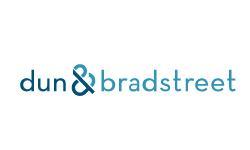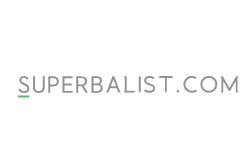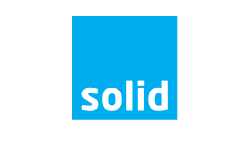Hidden content check |


Hidden content detection and removal enhance user experience and search engine visibility.
|
 |
Identifying “thin” pages |


Identification and addressing of thin or low-quality content ensure value for users and search engines.
|
 |
Identifying duplicated pages |


Resolution of duplicate content issues boosts visibility of unique and relevant content while avoiding penalties.
|

|
Indentifying under-optimized landing pages |


Identification of pages lacking keyword optimization, meta tags, and on-page elements, along with improvement suggestions.
|

|
Indentifying pages with low click through rates |


Suggestions for optimizing low CTR pages to attract organic traffic and enhance visibility.
|

|
Robots.txt file check |


Proper configuration of robots.txt enables search engines to crawl and index desired pages on your website.
|

|
Checking XML sitemap declaration in Robots.txt |


Declaration of XML sitemap in robots.txt ensures seamless website crawling and indexing by search engines.
|

|
Identifying Errors in robots.txt file |


Effective control of search engine access by identifying and resolving errors in the robots.txt file.
|

|
Identifying pages that should be blocked using robots.txt |


Identification and resolution of errors or syntax issues in the robots.txt file for better search engine control.
|

|
Checking whether robots.txt file is uploaded in the correct directory |


Uploading the file to the correct server location allows search engines to access and follow its instructions.
|

|
Checking whether records are grouped improperly |


Reviewing and categorizing records to provide clear instructions for search engine bots.
|

|
Auditing & Recommending relevant Wildcards |


Assessing wildcard directives and recommending optimal usage to regulate specific areas of the website.
|

|
Differentiate pages that require noindex tag/ should be blocked in robots.txt |


Identification of 'noindex' pages and blocking them in robots.txt if necessary to safeguard against search engine crawling.
|

|
Sitemap.xml check |
|

|
Checking whether XML Sitemap is submitted to Google or Bing |


Submission of XML sitemap to Google and Bing ensures indexing and visibility of website pages.
|

|
Identifying Errors in XML sitemap |


Identification and rectification of errors or issues within the XML sitemap that may hinder search engine crawling and indexing.
|

|
Finding non-200 pages in sitemap |


Detection of non-200 status code pages in the XML sitemap reveals concerns related to crawlability and accessibility.
|

|
Finding non-canonical URLs in sitemap |


Uncovering non-canonical URLs in the XML sitemap helps prevent duplicate content indexing.
|

|
Finding PPC pages in sitemap |


Exclusion of PPC landing pages from the XML sitemap improves indexing and relevancy.
|

|
Checking XML Sitemap size |


Evaluation of the size of the XML sitemap to ensure compliance with search engine guidelines and optimize crawling efficiency.
|

|
Checking whether blocked pages are declared in sitemap |


Ensuring an accurate XML sitemap to prevent indexing of sensitive or unnecessary content.
|

|
Checking whether orphaned pages are declared in sitemap |


Discovery of orphaned pages in the XML sitemap ensures their inclusion by search engines, identifying pages not linked from others.
|

|
Recommendation for Specialty Sitemaps |


Enhancement of content visibility through specialized sitemaps, such as video and image sitemaps, along with indexing suggestions.
|

|
Recommending categorized structure for XML Sitemap |


Optimization of XML sitemap with structured categorization for better organization and management.
|

|
Checking existing Structured Data on pages (JSON-LD, Microdata & RDFa) |


The presence and accuracy of structured data markup (such as JSON-LD, Microdata, and RDFa) on your website's pages can be assessed to enhance search engine understanding.
|

|
Identifying errors in Structured Data |


Errors in the implementation of structured data can be identified and fixed to ensure error-free schema markup.
|

|
Structured markup isn’t resulting in rich snippets |


The impact of structured data on search results can be evaluated, and recommendations for improvement can be provided.
|

|
Identifying pages that require structured data |


Pages or content that can benefit from structured data implementation can be identified, resulting in enhanced search engine visibility.
|

|
Recommending Schemas that need to be added on pages |


Recommendations can be made regarding schemas and structured data to improve search engine comprehension of your pages.
|

|
Collating list of large images |


Identifying and compiling a list of large images can help optimize website performance.
|

|
Finding images with no or irrelevant ALT text |


Optimizing images by providing ALT text or updating irrelevant ALT text improves search engine understanding.
|

|
Image sitemap check |


Ensuring the completeness and accuracy of the image sitemap facilitates search engine crawling and indexing.
|

|
Checking visibility for image search |


Optimizing image metadata and relevance enhances the visibility of images in image search results.
|

|
Creation of Image sitemap |


Creating an image sitemap improves the discoverability of images by search engines.
|

|
Checking whether images are served through a CDN |


Verifying if images are served through a Content Delivery Network (CDN) improves loading speed and performance.
|

|
Video sitemap check |


Checking the video sitemap for proper indexing and inclusion of video content in search results.
|

|
Checking markup for videos |


Reviewing video markup for proper implementation and compatibility with search engines.
|

|
Identifying whether video pages lack text |


Identifying video pages lacking text content and considering the addition of relevant text improves SEO performance.
|

|
Creation Video sitemap |


Creating a video sitemap enhances the indexing and visibility of video content by search engines.
|

|
Pages with missing titles |


Improving the optimization of page titles enhances search engine visibility.
|

|
Pages with long titles |


Improving the optimization of page titles enhances search engine visibility.
|

|
Pages with short titles |


Improving the optimization of page titles enhances search engine visibility.
|

|
Pages with missing meta descriptions |


Enhancing the optimization of meta descriptions improves search engine visibility.
|

|
Pages with long meta descriptions |


Enhancing the optimization of meta descriptions improves search engine visibility.
|

|
Pages with short meta descriptions |


Enhancing the optimization of meta descriptions improves search engine visibility.
|

|
Duplicate page titles |


Eliminating duplicate page titles ensures uniqueness and clarity.
|

|
Odd capitalizations in titles |


Ensuring consistent capitalization in titles for a cohesive presentation.
|

|
Odd capitalizations in descriptions |


Ensuring consistent capitalization in descriptions for a cohesive presentation.
|

|
Pages with non-descriptive titles |


Enhancing the relevance and click-through rates of pages with non-descriptive titles.
|

|
Identifying whether descriptions have a powerful calls to action |


Evaluating meta descriptions for compelling calls to action and messaging.
|

|
Checking Page load times of top landing pages |


The performance of the website can be improved by measuring page load times for top landing pages.
|

|
Checking Page load times of money pages |


Ensuring fast and efficient delivery of key content by assessing page load times for money pages.
|

|
Examining Page Caching mechanism |


Enhancing website speed and reducing server load by examining the page caching mechanism.
|

|
Checking Page Size |


Optimizing loading speed and overall website performance by checking page size.
|

|
Check whether code is using Gzip compression |


Reducing file sizes and improving page load times through the utilization of Gzip compression.
|

|
Inline CSS check |


Optimizing code and improving rendering speed through an inline CSS check.
|

|
Indetifying whether minification of JavaScript or CSS is required |


Optimizing code efficiency and page load times by identifying the need for minification of JavaScript or CSS.
|

|
Identifying Core Web Vitals metrics for pages |


Identifying areas for improvement in user experience by evaluating Core Web Vitals metrics for pages.
|

|
Indentifying HTTP requests |


Reducing server load and improving page load times by identifying and optimizing HTTP requests.
|

|
Inline JavaScript check |


Optimizing code and improving website performance through an inline JavaScript check.
|

|
Auditing Canonical tags |


An audit of Canonical tags is conducted to consolidate URLs correctly and prevent duplicate content issues.
|

|
Redirection checks for non www and .html pages |


Checks are performed to ensure consistent redirection of non-www and .html pages, maintaining a uniform URL structure.
|

|
Checking URLs through both secure and non-secure protocols |


The accessibility and indexing of URLs are verified through both secure and non-secure protocols.
|

|
Checking whether URLs resolve to a single case |


URLs are ensured to resolve to a single case to avoid potential duplicate content and indexing challenges.
|

|
Checking if trailing slashes are resulting in duplicate content |


Duplicate content concerns arising from trailing slashes are addressed to maintain a clean URL structure.
|

|
Checking if parameter URLs are resulting in duplicate content |


Duplicate content problems caused by parameter URLs are identified and resolved to enhance SEO performance.
|

|
Auditing Page indexation |


A comprehensive audit of page indexation is conducted to ensure that all relevant pages are appropriately indexed by search engines.
|

|
Checking whether site elements are mobile-friendly |


Enhancing the mobile user experience and improving SEO performance involves ensuring that site elements are mobile-friendly.
|

|
Checking Bounce rate of mobile visitors |


Analyzing the bounce rate of mobile visitors helps identify potential issues and optimize user engagement.
|

|
JavaScript and/or CSS are blocked |


Verifying if JavaScript and/or CSS are blocked ensures proper rendering and indexing by search engines.
|

|
Auditing Vary HTTP headers |


Conducting an audit of Vary HTTP headers optimizes caching and improves website performance.
|

|
Auditing rel="alternate" and rel="canonical" tags |


Auditing rel="alternate" and rel="canonical" tags ensures proper handling of mobile and desktop versions for better search engine performance.
|

|
Mobile sitemap check |


Checking the mobile sitemap for completeness and accuracy facilitates search engine crawling and indexing.
|

|
Identifying mobile-only 404s |


Identifying mobile-only 404 errors ensures a seamless user experience on mobile devices.
|

|
Identifying whether interstitials on mobile disrupt mobile browsing |


Evaluating interstitials on mobile prevents disruptions in mobile browsing and improves overall usability.
|

|
Identifying irrelevant cross links |


Identifying and eliminating irrelevant cross-links enhances user navigation and SEO relevance.
|

|
Auditing mobile site for unusual breakpoints |


Auditing the mobile site for unusual breakpoints ensures consistent design and functionality.
|

|
Checking whether mobile app content is indexed correctly |


Verifying the correct indexing of mobile app content improves visibility in mobile search results.
|

|
Checking zoom functionality on mobile |


Checking the zoom functionality on mobile devices ensures an optimal user experience and accessibility.
|

|
Checking disparity between desktop and mobile version |


Identifying and addressing any disparities between the desktop and mobile versions of the website is important for consistency.
|

|
Checking for Navigation Mismatch on Mobile and Desktop |


Checking for navigation mismatches between mobile and desktop versions maintains a consistent user journey.
|

|
Checking for Content Mismatch on Mobile and Desktop |


Identifying and addressing content mismatches between mobile and desktop versions improves the user experience and SEO consistency.
|

|
Identify multiple templates on the website and checking crawl issues |


To enhance SEO performance, it is important to identify multiple templates on the website and address crawl issues.
|

|
Internal Site search pages getting indexed |


Preventing duplicate content issues involves excluding internal site search pages from being indexed.
|

|
Staging site / any other version of the website indexed |


It is crucial to ensure that staging sites or alternate versions of the website are not indexed by search engines.
|

|
Unnecessary/Irrerelavant pages geting indexed |


Improving website relevance can be achieved by eliminating unnecessary or irrelevant pages from being indexed.
|

|
Footer Audit & Recommendation |


An audit of the footer should be conducted to identify optimization opportunities and provide recommendations.
|

|
Internal Linking Structure Audit & Recommendaton |


Evaluating the internal linking structure and offering recommendations for improvement can contribute to better SEO performance.
|

|
Redirection Checks |


Checking and optimizing redirections is essential to maintain proper website flow and prevent broken links.
|

|
Top Navigation & Breadcrumbs Audit & Recommendation |


The top navigation and breadcrumbs should be audited for usability, and recommendations for improvement should be provided.
|

|
In-depth Backlink Profile Audit |


Conducting an in-depth analysis of the backlink profile can help identify areas for improvement in SEO.
|

|
Checking Implementation of Tracking Codes |


Verifying the proper implementation of tracking codes ensures accurate data collection and analysis.
|

|
Pagination/Infinite Scroll Audit |


Auditing pagination and infinite scroll functionality is important for better user experience and indexability.
|

|
HTTPS Check & Server-level Configuration Audit |


A thorough check of HTTPS implementation and server-level configurations is necessary for security and SEO compliance.
|

|
Accelerated Mobile Pages (AMP) & Progressive Web Apps (PWA) Audit |


Optimizing Accelerated Mobile Pages (AMP) and Progressive Web Apps (PWA) can enhance mobile performance.
|

|
Detailed Recommendation for improving Core Web Vitals metrics |


Providing detailed recommendations for improving Core Web Vitals metrics, with a focus on speed and user experience, is essential.
|

|
Site Architecture Audit |


Conducting a comprehensive site architecture audit and suggesting improvements can improve crawlability and indexability.
|

|
Crawl Rate Optimization Audit |


Optimizing the crawl rate ensures that search engines can efficiently access and index website content.
|

|
DOM Structure Audit |


An audit of the DOM structure should be performed to identify optimizations for efficient rendering and better performance.
|

|
SEO Scorecard |


SEO scorecard is generated to assess website performance and identify areas for improvement.
|

|
In-depth Backlink Audit Report |


An in-depth backlink audit report is provided to analyze the quality and quantity of backlinks.
|

|
Audit Report Version |


The audit report version outlines SEO findings and recommendations for optimization.
|
Spreadsheet + Document Version
|
SEO Strategic recommendations |


Strategic recommendations are offered to improve SEO performance and organic visibility.
|
4 Points
|
Audit implementation explanation |


A detailed explanation of the audit implementation process and its impact on SEO is provided.
|
8 hours
|
Time Duration |
|
Receive report in 45 Days
|
Note: Additional Audit explanation support for engineering team can be provided at additonal cost |
|
$500 for 15 hours (Min 1 hour duration meetings)
To be utilized in two months
|









































